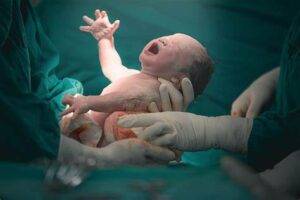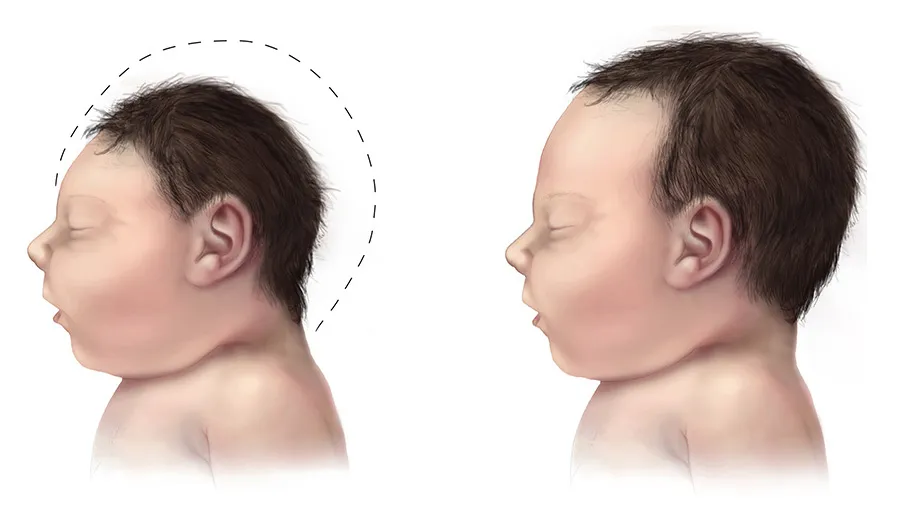Zygote: The Genesis of Life
The journey from conception to birth is miraculous, and it all starts with the zygote. Understanding this initial stage can offer insights into your child’s development.
What is a Zygote?
A zygote is the initial cell formed when two gamete cells (sperm and egg) fuse during fertilization. It contains all the genetic information needed to form a new individual.
How Do Sexual Intercourse and Assisted Reproductive Technology Lead to the Formation of a Zygote?
Sexual intercourse and assisted reproductive technology are two primary methods through which a zygote can be formed.
- Sexual Intercourse:
- During sexual intercourse, sperm is ejaculated into the female reproductive tract.
- The sperm then travels through the cervix, into the uterus, and eventually reaches the fallopian tube.
- Within the fallopian tube, the sperm encounters the egg. Numerous sperm surround the egg, but only one successful sperm penetrates the egg’s outer membrane.
- Once this penetration happens, the genetic material from the sperm combines with that of the egg, resulting in the formation of a zygote.
- Assisted Reproductive Technology (ART):
- Intrauterine Insemination (IUI): In this procedure, sperm is directly inserted into the uterus using a thin catheter. The sperm then travels to the fallopian tube, where it meets and fertilizes the egg.
- In Vitro Fertilization (IVF): Here, eggs are retrieved from the female’s ovaries and fertilized with sperm in a laboratory setting. The fertilized egg, now a zygote, is then implanted back into the uterus.
Formation of the Zygote
- After the sperm successfully infiltrates the egg, the genetic materials merge to form a single cell known as a zygote.
- The zygote undergoes rapid cell division over the next few days. Initially, it develops into a blastocyst and then progresses to an embryo.
By either natural or assisted means, the critical step is the union of sperm and egg, which sets off the process leading to embryo development.
Understanding the Difference Between Monozygotic and Dizygotic Twins Monozygotic Twins
Monozygotic, or identical twins, originate from a single fertilized egg. Here’s how it happens:
A single sperm fertilizes a single egg in the fallopian tube, forming a zygote.
During the blastocyst phase—just before implantation—the zygote splits into two separate cell groups.
These two groups develop independently into two embryos.
As a result, monozygotic twins share the same sex and genetic makeup, leading to nearly identical physical and genetic characteristics.
Dizygotic Twins
Dizygotic, or fraternal twins, develop quite differently:
Two separate eggs are released by the ovaries during ovulation.
Each egg is fertilized by a different sperm.
This results in two distinct zygotes.
Each zygote independently travels through the fallopian tube, implants in the uterus, and grows into two separate embryos. Unlike monozygotic twins, dizygotic twins can be of different sexes and generally have unique genetic profiles, just like any other siblings.
Key Differences
Origin: Monozygotic twins come from one zygote; dizygotic twins come from two separate zygotes.
Genetics: Monozygotic twins share identical genetic material, while dizygotic twins have different genetic combinations.
Sex: Monozygotic twins are always the same sex; dizygotic twins can be either the same or different sexes.
By understanding these fundamental differences, you can better appreciate the unique nature of each type of twin pregnancy.
Understanding the Difference Between a Zygote and an Embryo
When learning about early human development, it’s essential to understand the terms “zygote” and “embryo,” as they represent distinct stages in the developmental process.
The Zygote: The First Stage
A zygote is formed when a sperm cell successfully fertilizes an egg cell, resulting in a single cell with 23 pairs of chromosomes. This combination of genetic material marks the beginning of a new organism. Immediately after fertilization, the zygote starts to divide, going from one cell to two, then four, eight, and so forth.
Transition to the Morula and Blastocyst
As the zygote travels through the fallopian tube toward the uterus, it undergoes several changes. It first becomes a morula, a solid ball of cells. By the fifth day after fertilization, it further evolves into a blastocyst. The blastocyst is characterized by its fluid-filled cavity and differentiated cells, which will become both the placenta and the embryo.
The Embryo: Next Steps in Development
Once the blastocyst implants itself into the uterine lining, it transitions into what we now call an embryo. This implantation marks the beginning of pregnancy. The embryo stage spans from this point until the end of the eighth week of gestation. During this period, critical developments occur, laying down the foundation for the various organs and tissues.
Key Differences Summarized
- Zygote:
- Single-celled entity formed post-fertilization.
- Immediate division into multiple cells.
- Transitions through the morula stage.
- Embryo:
- Begins post-implantation into the uterine lining.
- Lasts from implantation to the eighth week of gestation.
- Involves significant cellular differentiation and organ development.
By understanding these stages—from the initial zygote to the developing embryo—you can better appreciate the complexity and wonder of early human development.
How Long Does the Zygote Phase Last?
The zygote phase typically endures for about four days. During this period, the zygote transitions through critical developmental stages before becoming a blastocyst and eventually an embryo.
The Journey Begins: From Zygote to Embryo
Once formed, the zygote undergoes several stages:
- Cell Division: The zygote divides to form a ball of cells.
- Implantation: The cell mass attaches to the uterine wall.
- Embryogenesis: The embryo begins to develop.
Detailed Development Stages
Fertilization: When the egg and sperm come together, they form a zygote. This is essentially a fertilized egg containing all the genetic material that will eventually turn into your baby.
Process of Ovulation: At the time of ovulation, a mature egg is released from the ovary and picked up by the fallopian tube. If no sperm is present, the egg will travel into the uterus and eventually be shed during the menstrual period. But if the egg joins with sperm and becomes fertilized, a zygote forms.
Zygote to Morula: The zygote stage is brief, lasting only a matter of days. During this time, the zygote undergoes rapid cell division and transforms into a morula, which is a round structure of cells.
Morula to Blastocyst: Around the fifth day after fertilization, the morula continues to divide and forms a blastocyst. A blastocyst is a differentiated embryo with a fluid-filled cavity, containing future placenta cells and fetal cells.
Blastocyst to Embryo: The blastocyst then implants into the uterine lining, marking the beginning of pregnancy. At this point, your baby is now an embryo and will remain in the embryonic period until the eighth week of gestation. After that, it becomes a fetus.
Genetic Blueprint: The Role of DNA
The zygote holds the DNA that will determine:
- Physical Traits: Like eye and hair color.
- Genetic Predispositions: To certain health conditions.
- Gender: Determined by the X and Y chromosomes.
At the heart of embryonic development lies the intricate dance of DNA. A chromosomally normal zygote has 23 pairs of chromosomes. At the time of fertilization, it has only one cell, formed when the sperm cell combines with the egg cell.
The genetic information in these cells then causes the zygote to start dividing. Essentially, the single cell will become two cells, then four, then eight, and so on. This process of cell division is fundamental to the development of the embryo.
The coordinated expression of genes guides the transformation of undifferentiated cells into specialized structures, forming the basis of individual uniqueness. This genetic blueprint unfolds during cell division, dictating physical traits, genetic predispositions, and even gender.

Factors Affecting Zygote Health
Several factors can influence the zygote’s development:
- Maternal Health: Nutrition and lifestyle choices.
- Paternal Factors: Sperm quality.
- Environmental Exposures: Such as toxins or radiation.
When Things Go Awry: Common Concerns
Sometimes, issues can occur, such as:
- Ectopic Pregnancy: Implantation outside the uterus.
- Chromosomal Abnormalities: Leading to conditions like Down syndrome.
- Miscarriage: Often due to genetic issues in the zygote.
Complications can particularly arise during the zygotic stage, which is one of the more common stages for problems to occur. Research indicates that approximately 20% of pregnancies end before they are clinically detected, often before implantation in the zygote stage.
Most complications at this point are related to chromosomal abnormalities. These abnormalities can include having an irregular number of chromosomes, leading to conditions like Trisomy 18, Trisomy 21 (Down Syndrome), or Turner Syndrome. Structural abnormalities in chromosomes can also be a factor.
Many of these early losses occur before someone knows they are pregnant, underscoring the significance of chromosomal health during this critical stage.
How Common Are Complications During the Zygote Stage?
Complications during the zygote stage are unfortunately not rare. Research shows that approximately 20% of pregnancies end before clinical detection, often during the early stages of development.
Common Issues
- Chromosomal Abnormalities: One of the primary causes of early pregnancy loss. Issues such as an irregular number of chromosomes can lead to conditions like Trisomy 18, Trisomy 21 (Down Syndrome), or Turner Syndrome.
- Structural Abnormalities: Even if the number of chromosomes is correct, their structure can be flawed, leading to complications.
Most of these complications occur before the pregnancy is even noticeable, making early losses a frequent phenomenon during the zygote stage.
Nurturing the Zygote: Maternal Care and Lifestyle Choices
The journey of life commences with the formation of the zygote, a single cell harboring the genetic essence of a future individual. Once fertilization occurs, the zygote embarks on a remarkable expedition, navigating through critical stages that lay the foundation for a healthy embryo. Maternal health plays a pivotal role in shaping the zygote’s development. This section explores the impact of maternal care and lifestyle choices on the well-being of the nascent life within.

Maternal Health Matters: Nourishing the Zygote
Proper nutrition is paramount during the early stages of pregnancy. The nutrients a mother consumes directly influence the zygote’s growth and development. Adequate intake of folic acid, iron, and other essential vitamins is crucial to prevent developmental issues. A balanced diet ensures that the zygote receives the necessary building blocks for cellular division and organ formation.
Furthermore, maintaining a healthy lifestyle significantly contributes to the zygote’s well-being. Avoiding harmful substances such as tobacco, alcohol, and certain medications is imperative, as these can have detrimental effects on the developing embryo. Regular prenatal check-ups with healthcare professionals provide guidance on maintaining optimal maternal health, fostering a supportive environment for the zygote’s progression.
The Role of Paternal Factors: Sperm Quality and Zygote Development
While maternal health is integral, paternal factors also play a significant role in shaping the zygote’s destiny. The quality of sperm contributes to the genetic composition of the zygote. Factors such as age, lifestyle, and exposure to environmental toxins can impact sperm health. Understanding and addressing these factors are essential for couples aiming to optimize the conditions for successful conception and zygote formation.
Safeguarding Against Environmental Exposures: A Zygote’s Vulnerability
The environment in which the zygote develops can have far-reaching consequences on its health. Exposure to toxins, radiation, and other environmental hazards can pose risks to the delicate process of embryogenesis. This section delves into the potential threats that the zygote faces from its surroundings and provides insights into safeguarding against these environmental exposures.
When Things Go Awry: Navigating Common Concerns in Zygote Development
Despite the intricacies of zygote development, complications may arise. This section explores common concerns, shedding light on issues such as ectopic pregnancies, chromosomal abnormalities leading to conditions like Down syndrome, and the unfortunate occurrence of miscarriages. Understanding these challenges is crucial for expecting parents, empowering them with knowledge to navigate potential hurdles in the early stages of pregnancy.
Stay Informed and Connected: Subscribe to Our Newsletter
As we unravel the mysteries surrounding the genesis of life, staying informed becomes paramount. Subscribe to our newsletter for regular updates on children’s health topics, from zygote development to parenting tips. Our commitment to fostering a healthy start for every child extends beyond information — it’s about building a community of support for parents and parents-to-be.
The Marvel of Embryogenesis: Transforming Zygote into Embryo
Embryogenesis is a captivating chapter in the developmental saga of life, where the zygote evolves into a multi-cellular structure, laying the groundwork for the intricate complexities of the human body. Each stage in this process is orchestrated with precision, shaping the future of the growing embryo.
Cell Division Unleashed: Crafting the Blueprint of Life
Following fertilization, the zygote embarks on a rapid series of cell divisions. This remarkable process, known as cleavage, results in the formation of a blastocyst—a ball of cells with a fluid-filled cavity. Initially, the zygote becomes a morula, which is a round structure of cells, and it travels down the fallopian tube toward the uterus. The morula continues to divide and forms a blastocyst around the fifth day after fertilization.
The blastocyst carries the genetic instructions needed for the formation of specialized cells, tissues, and organs. It is a differentiated embryo with a fluid-filled cavity containing future placenta cells and fetal cells. The next pivotal stage in embryogenesis is implantation. The blastocyst, now a structured mass of cells, attaches itself to the uterine wall. This attachment marks the beginning of a symbiotic relationship between the developing embryo and the mother’s body.
The blastocyst implants into the uterine lining and a pregnancy begins. Your baby is now an embryo, and it will remain in the embryonic period until the eighth week of gestation—after that, it becomes a fetus. The uterine environment provides essential nutrients and support crucial for the embryo’s continued growth and differentiation.
What Happens During the Blastocyst Phase Before Implantation?
During the blastocyst phase, a crucial transformation occurs that can lead to the development of identical twins.
In this phase, the fertilized egg, now a blastocyst, may split into two separate embryos. When this division takes place, the result is two pregnancies stemming from the same egg. This leads to the creation of monozygotic, or identical, twins who share the same genetic material and inherited traits, including gender.
Identical twins are distinguished from fraternal twins by their complete genetic similarity, originating from a single fertilized egg that split. This phase before implantation sets the foundation for a unique type of twin development.
Implantation: The Embryo Finds Its Home
The next pivotal stage in embryogenesis is implantation. The blastocyst, now a structured mass of cells, attaches itself to the uterine wall. This attachment marks the beginning of a symbiotic relationship between the developing embryo and the mother’s body. The uterine environment provides essential nutrients and support crucial for the embryo’s continued growth and differentiation.
Once the blastocyst implants into the uterine lining, a pregnancy officially begins. At this point, your baby is now classified as an embryo. It will remain in the embryonic period until the eighth week of gestation. Following this period, the embryo transitions into the fetal stage, where it will continue to grow and develop until birth.
This stage is crucial, as the uterine lining supplies the necessary conditions for the embryo to thrive. The mother’s body and the developing embryo work in tandem to ensure a successful pregnancy, marking a complex but beautifully orchestrated process of human development.
Genetic Blueprint Unraveled: Decoding the DNA
At the heart of embryonic development lies the intricate dance of DNA. The zygote carries the genetic blueprint that unfolds during cell division, dictating physical traits, genetic predispositions, and even gender. The coordinated expression of genes guides the transformation of undifferentiated cells into specialized structures, forming the basis of individual uniqueness.
Maternal and Paternal Contributions Harmonized
Embryogenesis harmonizes the contributions of both parents, as maternal and paternal genetic material intertwine. The symphony of genetic information orchestrates the development of tissues and organs, creating the foundation for a fully formed human being. Understanding this collaboration enhances our appreciation for the delicate balance required for successful embryonic development.
The Fragility of Life: Navigating Potential Complications
While embryogenesis is a marvel, it is not without challenges. This section addresses common complications that can occur during this critical phase, such as issues with organ development, neural tube defects, and the emergence of congenital abnormalities. Recognizing these challenges empowers parents and healthcare providers to implement timely interventions, ensuring the best possible outcomes for both the mother and the developing embryo.
Beyond Embryogenesis: An Ongoing Journey
Embryogenesis marks the initial chapters of life, but the journey is far from over. As we delve deeper into the wonders of prenatal development, subsequent articles will explore fetal development, the formation of organs and systems, and the unique characteristics that make each individual truly one-of-a-kind.
Conclusion
The journey from zygote to embryo is an awe-inspiring symphony of cellular events, genetics, and environmental influences. As we continue to unravel the mysteries of life’s genesis, it becomes evident that each stage is a testament to the delicate balance required for a healthy and thriving pregnancy. Stay tuned for our upcoming articles as we venture further into the intricacies of prenatal development, providing valuable insights for expectant parents and those eager to understand the fascinating world of embryonic growth.
Next Steps
If you find this information beneficial and wish to stay updated on children’s health topics, consider subscribing to our newsletter. If you’re planning a family or have concerns about early pregnancy stages, feel free to book an appointment with Dr. Michael Nwaneri. We’re here to offer expert advice, no obligations.




